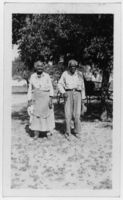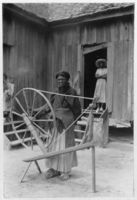Accounts of Previously Enslaved People
The institution of slavery was widely established in the United States, with its impacts having lasting implications on enslaved individuals under it and following generations. In the United States, although emancipation in 1864 granted increased freedom to previously enslaved individuals, those individuals were still oppressed under established systems of racialized violence and stratification. To adequately understand this, it is fundamental to consider the perspective of an enslaved individual under such a system, especially how it impacts one’s life experiences, their material wealth, their interpersonal experiences under a racialized system, and other factors impacted by the institution of slavery. A way to do so is to analyze first-person accounts.
The Federal Writers’ Project Collection of “Slave Narratives” was a collection of such accounts, most notably including transcribed oral histories in a series of interviews of various previously enslaved individuals. As well, this collection included photographs of individuals, as well as photographs of various items, places, or documents relating to one’s experiences under slavery. The items in this collection were acquired from the years 1936 to 1938.The experiences and accounts shared in this collection are extremely valuable in understanding how previously enslaved individuals navigated and experienced violent systems of oppression which enslaved them, such as accounts recalling the living or labor conditions of their enslavement. As the interviews take place post-emancipation, the collection provides valuable insight into the continuing systems of stratification which perpetuated oppression against racialized individuals, especially economically and in social relations. As well, the collection provides rich detail into the resistance of enslaved individuals, whether through expressing agency in cultural practices or openly resisting authority.
There is immense value brought in a collection of documents detailing the experience of enslaved individuals. However, there are simultaneously limitations of this collection in its ability to be fully accurate to the events it describes. This is due to how it was collected: the interviewers who collected and transcribed the interviews were largely white, though some black interviewers participated as well. Oftentimes, the answers given to interviewers could be influenced by their race. For example, if a previously enslaved black person was interviewed by a white person, the racist social relations predominant in the 1930s could influence both the interviewers’ perception of those they interview, and the narrative provided. As well, according to Yetman, as interviews emphasize the dialect of the person being interviewed in their transcription, there is further doubt on the accuracy of the exact words claimed to be said.
Despite this, the Federal Writer’s Project Collection of “Slave Narratives” remains an extremely valuable source for understanding such lived experiences.

